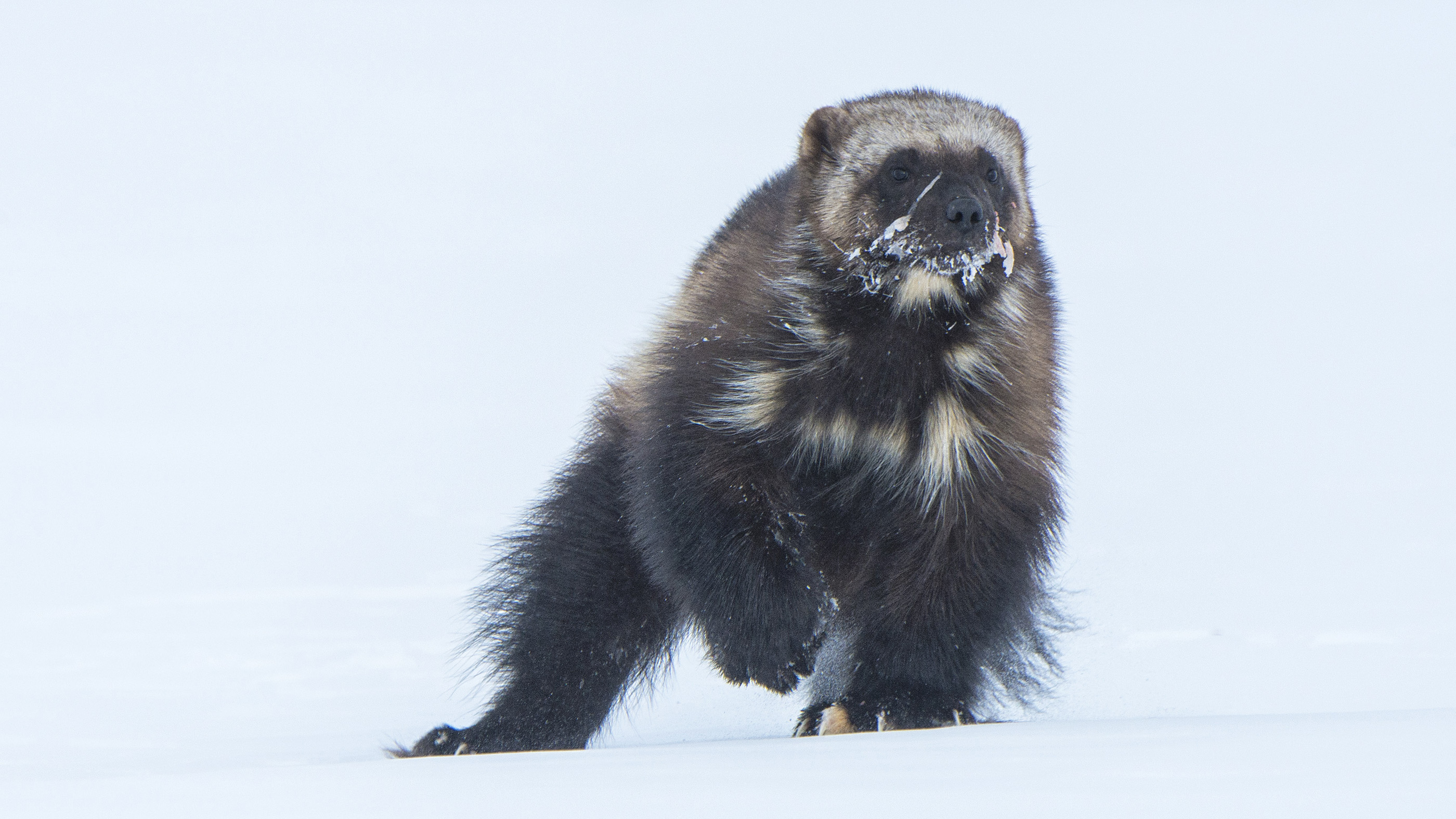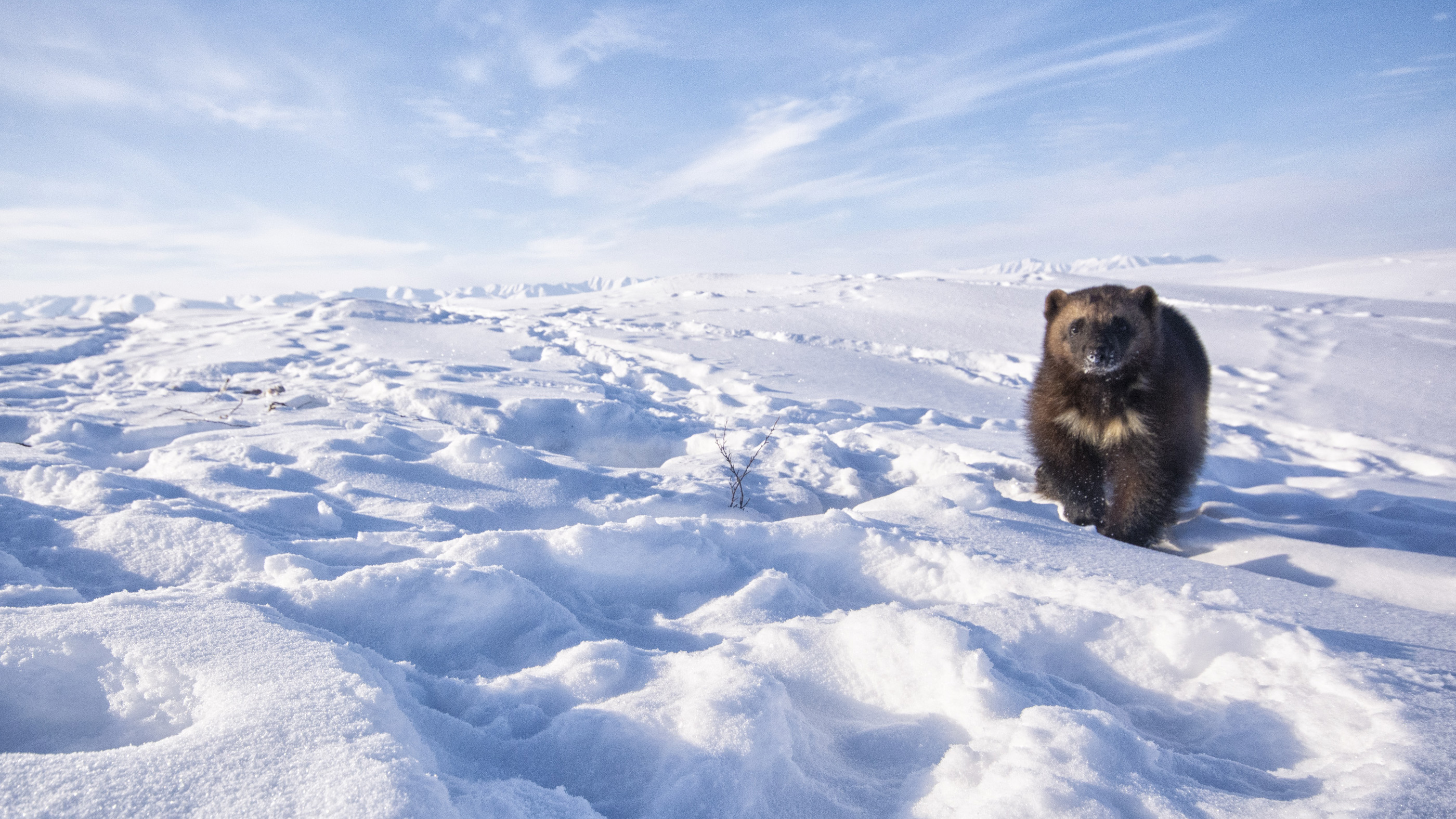Conservationists want to bring wily wolverines back to the Rockies


In 2002, on a cold March night in Wyoming's Teton Range, a young wolverine slipped inside what looked like a miniature log cabin in search of a meaty morsel and heard the dull thud of a log door dropping shut. The young male settled into the cozy leaves lining the bottom of his log cabin to sleep off the evening feast.
A team of Wildlife Conservation Society scientists led by Bob and Kris Inman opened the trap to discover a familiar friend. The wolverine had been captured there the year before and fitted with a GPS collar that allowed the scientists to track its wanderings in search of food and love as far as the Idaho town of Pocatello. Pocatello Pete, as he was dubbed, looked down on the lights below and, apparently unimpressed with what he saw, high-tailed it back to the Tetons.
Pete was not the only wolverine in the study that journeyed far and wide. They fitted another collar on another wolverine in December, 2008, which they called "M56," in northwest Wyoming; M56 then disappeared until he was located in the southern Greater Yellowstone Ecosystem at the southern end of the Wind River Range near Lander, Wyoming. After negotiating the Great Divide Basin south of the Wind River Range in Wyoming where he was observed scavenging a cow, the wolverine island-hopped south to cross Interstate 89 on Memorial Day, 2009.
Within a few days, M56 made his way to Rocky Mountain National Park in Colorado, where he became the first documented report of a Colorado wolverine since 1919. A wolverine here was exciting because habitat analysis suggests a potential for recovery in Colorado and New Mexico to secure this amazing critter's future in the lower 48.
The wolverine (Gulo gulo) is an endurance athlete. With snowshoe feet and crampon-like claws, wolverines prefer high elevations in the mountainous western U.S. As they face growing threats from loss of denning habitat caused by melting snow and a warming climate, and increasing development in valley bottoms that could sever movement between mountain ranges. WCS scientists hope to help them find a new foothold in the rugged terrain of the Colorado Rockies.
Wolverines live in low population densities, occupying huge home ranges scattered among island-like habitats in the high peaks of dispersed mountain ranges. There, they find persistent spring snow cover crucial for cozy dens to rear their cubs, an abundance of marmots and other prey, refrigerated food storage, and potentially less competition with predators like grizzly bears and wolves.

The adventures of Pete and M56 required traversing roads, ranches and scrubby sage as the animals moved between isolated mountain ranges. Such movements are crucial to wolverine survival so they can diversify their genes, and yet are increasingly challenged by a voracious human footprint and climate change.
Get the world’s most fascinating discoveries delivered straight to your inbox.
Rather than focus on a single park or even ecosystem to support the wolverines' survival, biodiversity conservation must look at how ecosystems are interconnected so the animals can exchange genes between isolated groups.
The scattering of wolverines among semi-isolated mountain islands presents challenges for wolverine survival because no single island can support enough breeding individuals to sustain a population over time. Wolverines must be able to carry their genes between island habitats to maintain a population large enough to survive into the future.
Today, we believe the Southern Rockies alone contains 21% of the potential wolverine habitat remaining in the lower 48 states, which could significantly bolster the population that is currently believed to be fewer than 300 individuals. Further, Southern Rockies habitat encompasses higher elevations that might provide more resilience against climate change and loss of persistent snow cover; the area also may pose fewer challenges for maintaining connectivity since the habitat is more connected than the dispersed mountain ranges to the north.
Although M56 proved that wolverine males are capable of moving to the Southern Rockies on their own, there is no evidence suggesting females would accomplish a similar journey. As such, we think that recovery in Colorado would require active rewilding.
If we want human imaginations to light up and jaws to drop at the sight of the small but mighty wolverine, we need action now. Let's work together to bring wolverines back to Colorado after a century-long absence and ensure their long-term survival as an iconic ambassador for the Wild Rockies.
Brent Brock is Northern Rockies Landscape Lead in the Rockies Program at WCS (Wildlife Conservation Society).
Brock is the Northern Rockies Program Lead at the Wildlife Conservation Society. He received a Bachelor of Science degree in wildlife biology in 1985 and a Master of Science degree in rangeland ecology in 1997 at Kansas State University. He works part-time as a landscape and spatial ecologist for the Wildlife Conservation Society and spends the remainder of his professional time as owner and operator of HoloScene Wildlife Services, LLC, as a private wildlife consultant. He has 30+ years experience focused on applying GIS and spatial analysis in the fields of ecology and conservation science. His work has focused on everything from cockroaches and cicadas to bison and grizzly bears. For the past decade, much of his focus has been on large landscape wildlife connectivity and developing advanced tools to improve land use planning to minimize the impact of rural sprawl on wildlife. He is dedicated to protecting and restoring one of the most biologically intact ecosystems in North America. His current focus is on developing innovative solutions for preserving working lands and improving stewardship for wildlife they contain in the face of increasing threats from rapidly growing human population in the region.


